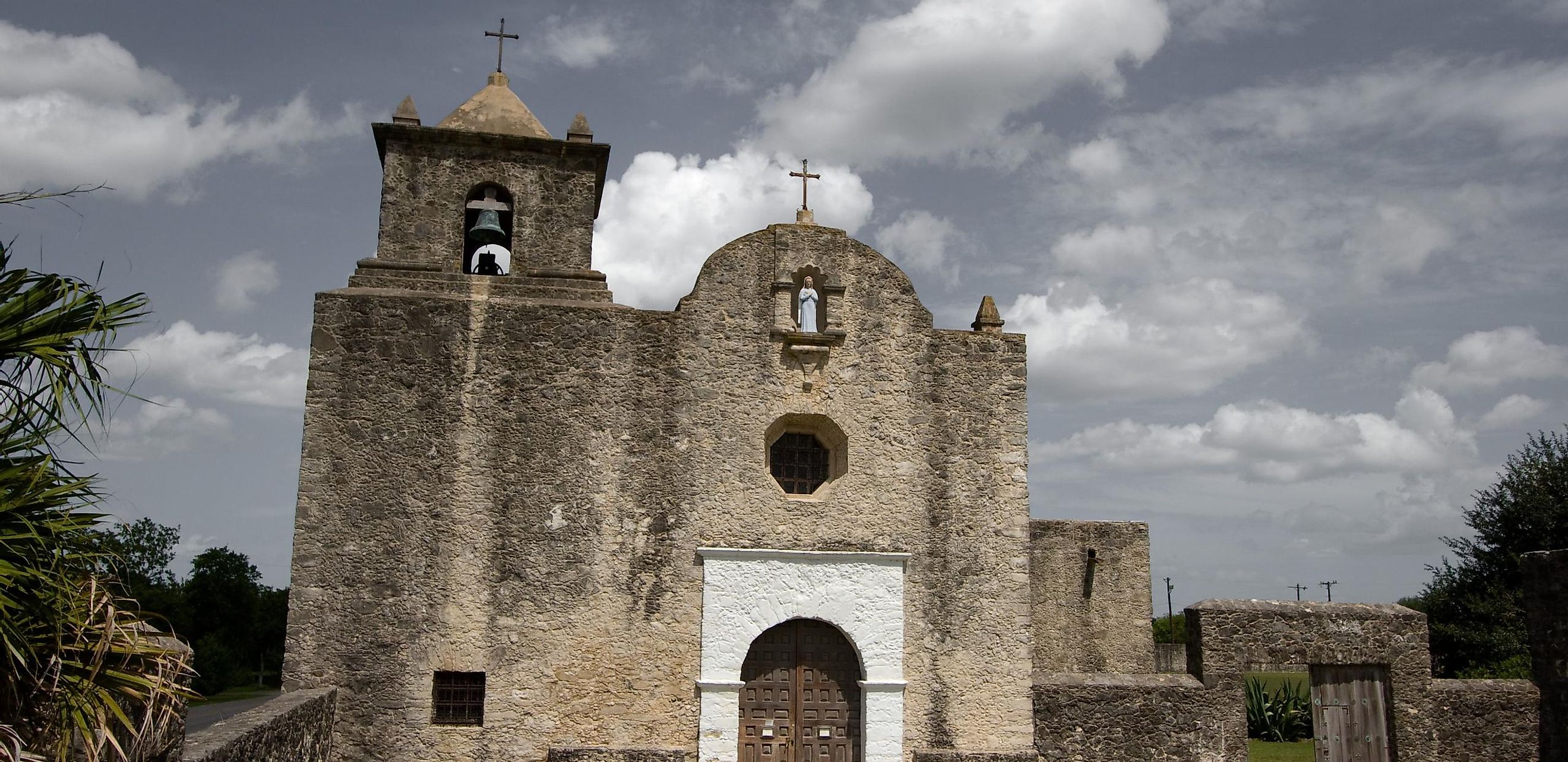
12 Must-See Historic Towns in Texas
The Lone Star State, as it is fondly called, has been through a lot of rough and troubled times. The history of this rugged state, from the American Civil War to the Texas Revolution, is one to be studied. It came out unfazed, stronger than ever, and has evolved from just a Cowboy area to an agricultural epicenter and a major oil and gas production area.
The name Texas was derived from the Caddo word meaning “friends.” Texans have held through to this meaning, and no matter where you find yourself, you get to experience the warm hospitality of these unique people. A good way to better understand this state and its people is by visiting some of the towns that played a major role in its history. Get your treasure map if you have one, and pack your bag as you explore these 12 must-see historic towns in Texas.
Goliad

Goliad is famous for the Goliad Massacre during the Texas Revolution. The town of Goliad is among the oldest towns in the state of Texas. Founded along the San Antonio River, approximately 90 miles from the town of San Antonio, this municipality is littered with significant landmarks that played important roles in the town’s history.
A famous monument is the Mission Rosario State Historic Site. Here, you can find ruins of the 1750s Mission Rosario; these ruins have interpretive signs that explain the history of the mission. Another significant place in Goliad is the Presidio La Bahía, a fort built by the Spanish army in 1747. It was also the location of the “Battle of Golia” in 1835 and the “Goliad Massacre” in 1836. Go on a scenic hike on the Angel of Goliad Hike & Bike Trail, which connects the south edge of the town to the Angel of Goliad statue. Along the trail, you get to enjoy the different species of flowers and faunas.
Presidio

The town of Presidio is home to the largest sodium-sulfur battery in the United States, created to improve transmission reliability. The town’s name is Spanish for the word “Fortress.” Located near a number of cities, it is easy to overlook Presidio, but this municipality has a lot in store for adventurers.
Less than 40 miles away is the Big Bend Ranch State Park, the largest state park in Texas. It may interest you to know that Presidio is the closest major town to this park. Explore all there is in this park, from the Madrid Falls to the Colorado Canyon to the wildlife in the area. Spend the hiking, mountain biking, or just enjoying the beauty of nature.
Back from the park, visit the Fort Leaton State Historic Site. This adobe structure was a private residence in the early 19th century until it was purchased by Benjamin Leaton and adopted as a fortress.
Bandera

Located in the Texas Hill Country is the Cowboy Texan town of Bandera. This municipality is known as the “Cowboy Capital of the World.” This title dates back to the last cattle drive of the 1800s, where it served as the staging area for the Great Western Cattle Trail.
About 52 miles from San Antonio, this town has become the favorite spot for motorcyclists from the busy town of San Antonio every Sunday for what has been tagged the “Bandera Breakfast Run.” With a population of less than 1000 people, Bandera can be underestimated; there is a lot to see and do in this Cowboy city.
Ride around town like a born cowboy on a horse, following historical trails. Join people at the Outlaw Outfitters Horseback Adventures to traverse about 5400 acres of remote area in and around Bandera. Once you're done with horse riding, visit the Bandera Natural History Museum to see replicas of dinosaurs and Ice Age animals. See art pieces from different times, like the Spanish Viceregal period of 1521-1820.
Fredericksburg

Fredericksburg is the home of the Texas German, a dialect spoken by the first generation of German immigrants who refused to learn English. This Texan town was named after Prince Frederick of Prussia; it is often referred to as the “Fritztown” by old German residents.
This city is famous for its sophisticated wineries and several National Historic Landmarks. Fredericksburg is the starting point for wine lovers visiting wineries in the Texan Hill country. Enchanted Rock is approximately 17 miles from this town, which is home to the Enchanted Rock State Natural Area. This rock covers roughly 640 acres of land between two counties. It is the largest pink granite monadnock in the United States. The park area allows for rock climbing, primitive backpack camping, hiking, and picnicking.
Another great location to visit is the National Museum of the Pacific War. The museum speaks to the history of World War II alongside the history of Chester W. Nimitz, whose boyhood home is located in this town. Nimitz was the commander-in-chief of the Pacific Ocean Areas during World War II. Look out for the Admiral Nimitz Museum, which is still in this area and tells the story of Nimitz's life as a young boy and naval officer.
Marshall

Marshall, a city that wears a hat with many feathers, is definitely a place worth visiting. This town is the cultural and educational center for the Ark-La-Tex region, and it was also an important political and production area during the American Civil War. It is known for hosting one of the largest lights festivals in the United States, “Wonderland of Lights.” It goes by different nicknames, “the Pottery Capital of the World,” “Cultural Capital of East Texas,” and the “Athens of Texas.”
Talking about historical areas, while in Marshall, be sure to visit the Old Harrison County Courthouse, which was completed in 1901. Its stunning exterior architecture and interior attract visitors all year round. Shopping at the Joe Weisman & Company or Joe Weisman & Co. is also a great experience. This is also the oldest family-owned department store in Texas, which now runs as the Weisman Center, a Retail Cooperative based on an open mall concept.
Finally, it's worth seeing the Inaugural ball gown worn by Lady Bird Johnson and other pieces while touring around the Harrison County Historical Museum.
Boerne
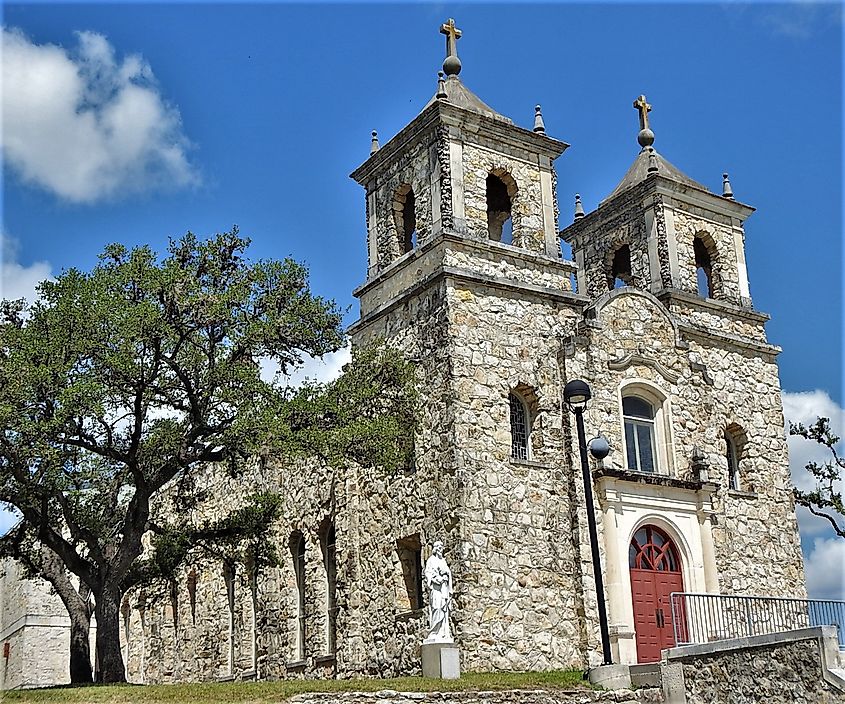
This town has a rich German heritage. Founded over 150 years ago along the banks of Cibolo Creek by German immigrants, local tradition claims it was initially named “Tusculum.” It was later renamed “Boerne” after the political writer Ludwig Borne in 1852.
Boerne is a spectacular place to visit; aside from its thrilling history, it is a hub of outdoor activities and heartwarming hospitality. There is an activity for every family and friends, from golfing to caving.
Starting with the Hill Country Mile, which is a 1.1-mile walking path where history meets business. Along this walking path, you get to see several historical locations, eat from local restaurants, and shop from the antiques shops. The path meanders around Cibolo Creek, giving access to pocket trails, picnic tables, and hiking trails.
You can also spend time discovering rare gems and relics like the 1614 Low German Bible, provided by Boerne's Patrick Heath Public Library. Explore the Cascade Caverns and Cave Without a Name, two of the cave systems in the town that were opened to the public.
Gonzales

The history of the Texas Revolution would not be complete without this town. Gonzales was one of the earliest Anglo-American settlements in Texas, founded on the confluence of the Guadalupe and San Marco Rivers. The first shot in the battle for Texas independence, alongside other important events in the war, originated from this small town.
Anyone curious to learn more about the war can visit the Texas History Museum District in Gonzales. In this area, you will find the Canon used to fire the first shot during the War, a 19th-century Jail where frontier outlaws were kept, the Gonzales Memorial Museum (erected in honor of the “Immortal 32” who went to defend the Alamo), two of Gonzales historic homes, and the Gonzales County Jail Museum (showcasing pictures of sheriffs and deputies, and artifacts of prisoners that have stayed in the jail).
After a long day researching history, visit the Palmetto State Park to relax. The park provides many relaxing activities for visitors, from hiking through the picturesque hiking trails to kayaking along Oxbow Lake.
Port Isabel
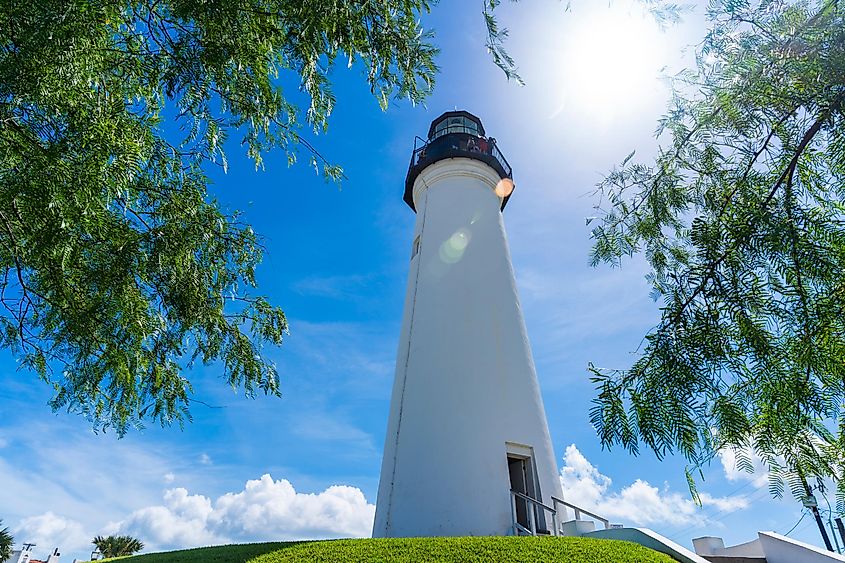
Port Isabel was founded as a town after the Mexican War of Independence. It later became an important cotton-exporting port during the American Civil War. Everything in the town was fought over, from the harbor to even the town itself.
This quaint coastal town has seen its fair share of destruction by different hurricanes, particularly one in 1967 and another in 2008. Despite these setbacks, the town has been able to preserve some of its history, and it's always teeming with visitors all year round.
It is famous for the Port Isabel Lighthouse, the only lighthouse on the Texas Gulf Coast that is open to the public. This is a perfect place to start your adventure in this town. Kids can have fun playing on the hill around the lighthouse.
Learn about the history of Port Isabel and Cameron County at the Port Isabel Historical Museum, housed in the 1889 Champion Building. The museum displays relics and artifacts from the United States and the Mexican War. On a stroll around the downtown area, keep an eye out for historical markers like the Fort Polk and the Queen Isabel Inn.
Socorro
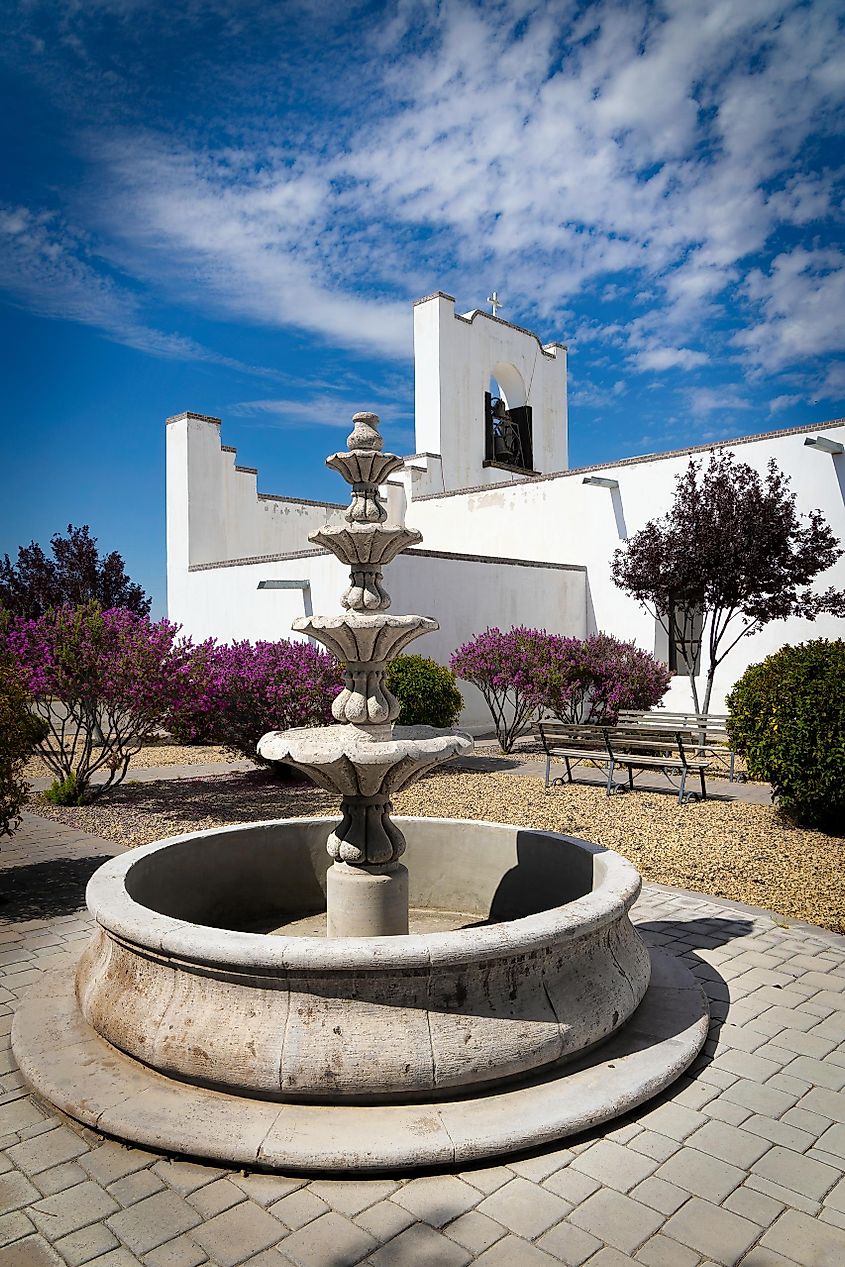
A town that has stood up to the meaning of its name for centuries. Socorro is Spanish for aid or help. This town was founded by the Manso and Piros Indians in 1680 after fleeing the Pueblo Revolt in Northern New Mexico.
Beyond its rich history, this town is an exciting place to visit. It ranked as the 22nd-most exciting city in Texas by Movoto in 2014. Walk the beautiful trails in Bulldog Championship Park or explore the historical Socorro Mission that houses one of the 112 authorized replicas of the Pieta.
When you’re not busy exploring, be part of the Fiesta de San Miguel—Socorro Mission La Purisima, an annual bazaar in September. During the festivities, there are a lot of live music, food, drinks, games, etc.
Floresville
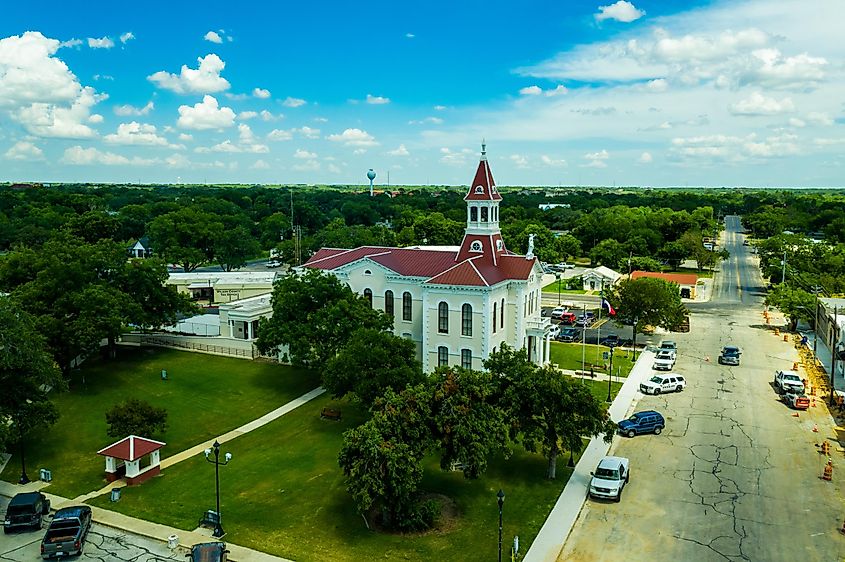
Are you searching for a town with some South Texan charm? Then you should visit Floresville, a small town with a lot of Southern charm and rich heritage. It was named after the Flores de Abrego family, early settlers of this town.
The Wilson County Courthouse was constructed in 1884 and still serves as the seat of the Wilson County Government. The courthouse was built in an Italian style with a statue of the blindfolded Lady Justice at the front porch.
Another interesting stop is the jail cells at Wilson County Jailhouse Museum, designed in 1887 and functioning until 1974. The museum showcases pictures and memorabilia. On a guided tour around Floresville, keep an eye out for different historical markers, as the town is on the Texas Independence Trail and is home to 62 state historical markers.
Lockhart

Initially known as Plum Creek, this settlement was later renamed after Byrd Lockhart, the assistant surveyor of Green DeWitt. Lockhart is believed to be the first Anglo to set foot in Caldwell County. This town is a victory site of Texans over the Comanche during the “Battle of Plum Creek.”
Popularly known as the “Barbecue Capital of Texas,” be sure to try out some of the finest barbecue recipes in the state. Make your first stop at the Caldwell County Museum, housed in an old jail, showcasing old pictures, stories, and films. While at the museum, you can join the tour around the jail system.
Those interested in reading a story to kids can check out the Dr. Eugene Clark Library, Texas's oldest and continually operating library. A nice way to end the day is by taking a deep dive into the pool area available at Lockhart State Park.
Bastrop
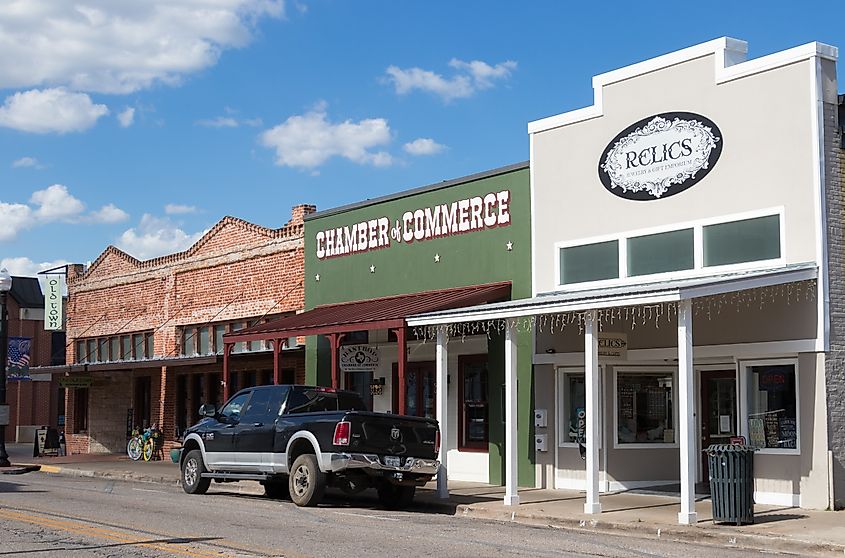
This quaint town has successfully earned the title of the “Most Historic Small Town in Texas,” despite the 1862 fire that gutted most of its Downtown and the County Courthouse. This town shares the same name with Felipe Enrique Neri, Baron de Bastrop, a commoner in the Netherlands who was wanted for embezzlement.
Bastrop is a 40-minute drive from Austin, the state capital. As a result of this short distance, this charming municipality is always packed with visitors looking to escape the noise of the big cities. McKinney Roughs State Park is about 15 minutes from this town. There are a lot of exhilarating activities to do in this park, from ziplining to horseback riding.
Here are just a few towns that stood out in Texas history. Texans are attached to their history and have done a good job preserving most of the historical markers for the younger generation. A visit to these monuments is a constant reminder of the strong fighting spirit of the people of this great State. So, what are you waiting for? Pack your bags ready and jump on the next flight to a state where history meets adventure.











